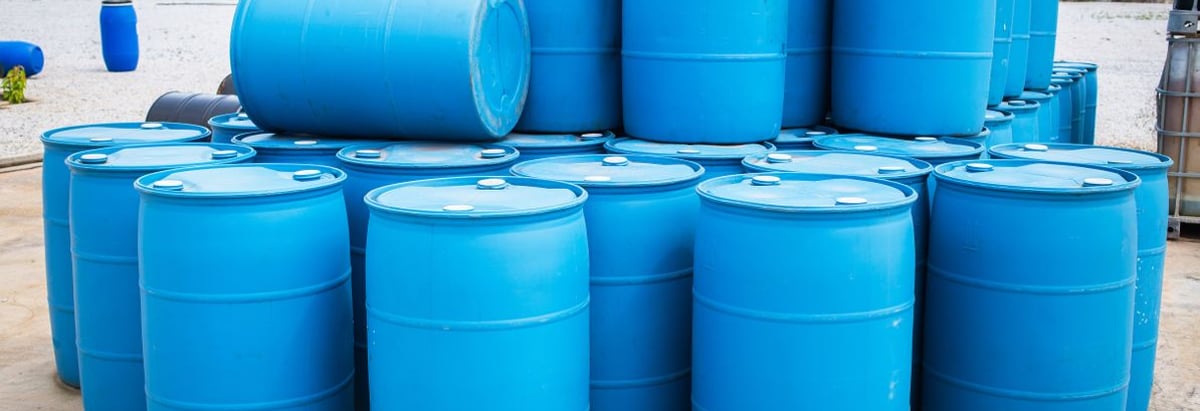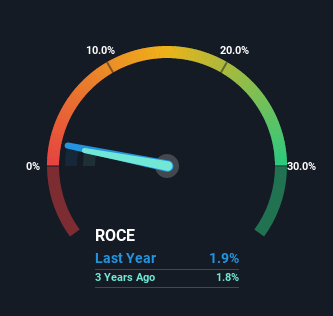Be Wary Of Southeast Asia Properties & Finance (HKG:252) And Its Returns On Capital

When we're researching a company, it's sometimes hard to find the warning signs, but there are some financial metrics that can help spot trouble early. Businesses in decline often have two underlying trends, firstly, a declining return on capital employed (ROCE) and a declining base of capital employed. Basically the company is earning less on its investments and it is also reducing its total assets. So after we looked into Southeast Asia Properties & Finance (HKG:252), the trends above didn't look too great.
Understanding Return On Capital Employed (ROCE)
Just to clarify if you're unsure, ROCE is a metric for evaluating how much pre-tax income (in percentage terms) a company earns on the capital invested in its business. The formula for this calculation on Southeast Asia Properties & Finance is:
Return on Capital Employed = Earnings Before Interest and Tax (EBIT) ÷ (Total Assets - Current Liabilities)
0.019 = HK$21m ÷ (HK$1.6b - HK$486m) (Based on the trailing twelve months to March 2022).
So, Southeast Asia Properties & Finance has an ROCE of 1.9%. Ultimately, that's a low return and it under-performs the Packaging industry average of 12%.
Check out our latest analysis for Southeast Asia Properties & Finance

Historical performance is a great place to start when researching a stock so above you can see the gauge for Southeast Asia Properties & Finance's ROCE against it's prior returns. If you'd like to look at how Southeast Asia Properties & Finance has performed in the past in other metrics, you can view this free graph of past earnings, revenue and cash flow.
What Can We Tell From Southeast Asia Properties & Finance's ROCE Trend?
We aren't too thrilled by the trend because ROCE has declined 52% over the last five years and despite the capital raising conducted before the latest reports, the business has -26% less capital employed.
On a side note, Southeast Asia Properties & Finance's current liabilities have increased over the last five years to 31% of total assets, effectively distorting the ROCE to some degree. Without this increase, it's likely that ROCE would be even lower than 1.9%. While the ratio isn't currently too high, it's worth keeping an eye on this because if it gets particularly high, the business could then face some new elements of risk.
The Key Takeaway
In summary, it's unfortunate that Southeast Asia Properties & Finance is shrinking its capital base and also generating lower returns. Investors must expect better things on the horizon though because the stock has risen 10.0% in the last five years. Either way, we aren't huge fans of the current trends and so with that we think you might find better investments elsewhere.
Since virtually every company faces some risks, it's worth knowing what they are, and we've spotted 2 warning signs for Southeast Asia Properties & Finance (of which 1 doesn't sit too well with us!) that you should know about.
If you want to search for solid companies with great earnings, check out this free list of companies with good balance sheets and impressive returns on equity.
If you're looking to trade Southeast Asia Properties & Finance, open an account with the lowest-cost platform trusted by professionals, Interactive Brokers.
With clients in over 200 countries and territories, and access to 160 markets, IBKR lets you trade stocks, options, futures, forex, bonds and funds from a single integrated account.
Enjoy no hidden fees, no account minimums, and FX conversion rates as low as 0.03%, far better than what most brokers offer.
Sponsored ContentNew: Manage All Your Stock Portfolios in One Place
We've created the ultimate portfolio companion for stock investors, and it's free.
• Connect an unlimited number of Portfolios and see your total in one currency
• Be alerted to new Warning Signs or Risks via email or mobile
• Track the Fair Value of your stocks
Have feedback on this article? Concerned about the content? Get in touch with us directly. Alternatively, email editorial-team (at) simplywallst.com.
This article by Simply Wall St is general in nature. We provide commentary based on historical data and analyst forecasts only using an unbiased methodology and our articles are not intended to be financial advice. It does not constitute a recommendation to buy or sell any stock, and does not take account of your objectives, or your financial situation. We aim to bring you long-term focused analysis driven by fundamental data. Note that our analysis may not factor in the latest price-sensitive company announcements or qualitative material. Simply Wall St has no position in any stocks mentioned.
About SEHK:252
Southeast Asia Properties & Finance
An investment holding company, manufactures and distributes plastic packaging materials in Hong Kong, the People's Republic of China, Japan, Oceania, North America, and Europe.
Mediocre balance sheet low.
Market Insights
Community Narratives




